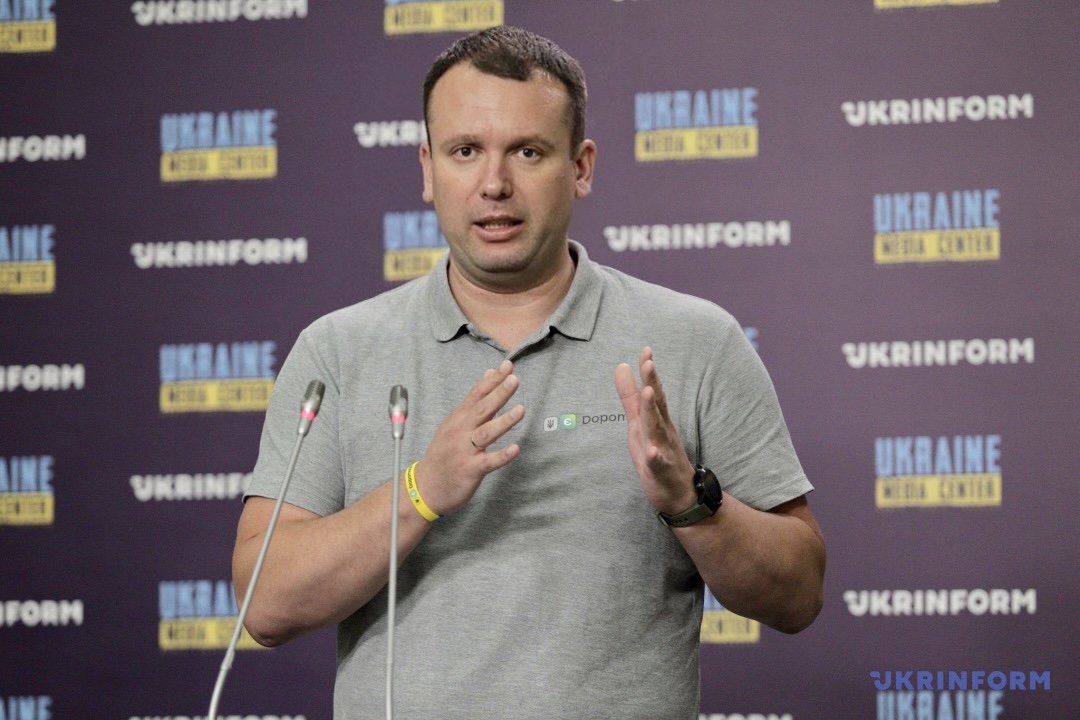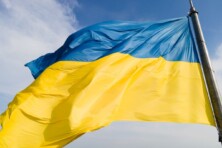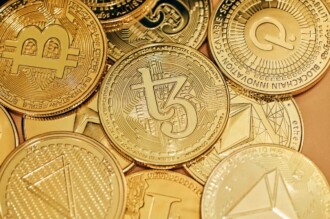The humanitarian platform eDopomoga was created by the Ministry of Social Policy of Ukraine and the Information and Computing Center of the Ministry of Social Policy of Ukraine State Enterprise with the support of the Ministry of Digital Transformation, the World Bank and UNDP in Ukraine with the financial support of Sweden. The platform has three directions: monetary assistance from the state (eDopomoga state); receiving and providing charitable assistance (eDopomoga volunteer); payments from international organizations (eDopomoga international).

Kostiantyn Koshelenko, Deputy Minister of Social Policy of Ukraine on digital development, digital transformations and digitalization.
Why was the eDopomoga humanitarian platform created?
The humanitarian platform eDopomoga was created to fight the humanitarian challenges that the war has put before us and to provide additional support to people in difficult life circumstances.
From the first days of the full-scale invasion, a large number of volunteers turned to the Ministry of Social Policy with requests about who and where needed food, clothing, medicine, etc., so we decided to create a platform on which people can leave a request, and benefactors—deliver exactly those goods that the person needs. This is how hand-to-hand help appeared.
Already in the first month, it became clear that the platform is an effective means of support, but to increase the positive effect, it is necessary to give the opportunity to join those benefactors who are not close to those in need. The implementation was helped by the first partners, who provided the opportunity for benefactors to close applications online, using mechanics similar to virtual gift certificates. Back in April, Fozzy Group responded with the networks “Silpo”, “Thrash!”, “Fora”, “Fozzy”, and then pharmacies 911 and 3i, gas stations WOG. It is important that this method of assistance provides support not only to the recipients, but also to the entire supply chain with store employees and product manufacturers.
Subsequently, we built two more directions of the eDopomoga platform—state and international.
eDopomoga state was filled with up-to-date information about the assistance provided by the state, including how to get housing allowance for IDPs, how to report damaged property, etc.
eDopomoga international became a response to requests from international organizations that want to support Ukrainians in vulnerable categories financially and do not have mechanisms for this. A universal form was created, thanks to which people left applications for financial assistance from international organizations. The Ministry of Social Policy verified the data of the applicants and started transferring the lists for payment to international organizations at their request, which in turn pay the funds directly.
How long did the technical side take and how many developers were involved in creating the platform?
The first version of the platform with minimal functionality was created by IT volunteers in a few weeks. Later, the ICC of the Ministry of Social Policy State Enterprise began to administer the platform.
Also, in the development of the platform and the development of new solutions, we enlisted the support of international organizations—the World Bank and the UNDP of Ukraine with the financial support of Sweden.
But even now we are very limited in resources, so we still need support for development.
Was it difficult for the Ministry of Social Policy and the Ministry of Digital Transformation to involve the World Bank, UNDP in Ukraine and the Government of Sweden in the creation of eDopomoga?
In recent years, we have cooperated with the World Bank and UNDP in Ukraine on various aspects of the Ministry’s work. And with the beginning of a full-scale invasion, the idea of creating a platform was born, we offered our partners to support this initiative. This is how we received support—they supported the creation and implementation of the project, as the platform became a timely, transparent and innovative tool for additional assistance to people.
What results did the Ministry count on when launching eDopomoga, and what results were achieved in 2022?
At the beginning, we didn’t have a clear metric that we wanted to get, because we needed to provide a service that would be convenient and work for years. We have made the service and have already formed the planned indicators for 2023.
As of 2022, lists of more than 3 million people who applied through the eDopomoga platform were handed over to international organizations for the payment of financial aid, of which 907,000 people received aid in the amount of about 6 billion hryvnias ($165 million).
Thanks to the volunteer direction, more than 12,000 families received help in the amount of about 6 million hryvnias ($165,000)—139,000 items of food, medicine and fuel were handed over from more than 4,000 benefactors from 50 countries of the world.
Also in 2022, the eDopomoga platform received the Go Global Awards 2022 in the nomination “Technological Innovation of the Year” from the International Trade Council and the Resilience Award Ukraine 2022 from Mastercard. These awards were important because they allowed the world to spread more information about the possibility of helping Ukrainians and confirmed its effectiveness and transparency.
How and who determines who will receive assistance? Yes, these are those who have lost their jobs or have a serious illness, are displaced, have large families, etc., but who will receive help first?
If we talk about the volunteer direction of the platform, then purely private benefactors choose a person to help. Today, donors can help a large family from Kharkiv, and tomorrow—a person with a disability from Mykolaiv or a pensioner from Lviv. It’s their choice who to help, but the platform provides a convenient opportunity to search with filters by geographic feature, life situation, and more.
If we are talking about the international direction of the platform, then in accordance with the memorandums with international organizations, it is these organizations that choose the category of persons to whom international assistance will be awarded.
We receive requests for lists of applications, for example from 30,000 pensioners from the temporarily occupied territories of Kherson, Donetsk and Luhansk regions or 50,000 large families from Lviv, Kyiv and Vinnytsia regions, we download verified lists of people according to these criteria and forward them to international organizations. They, in turn, carry out an additional check for deduplication of applications and pay assistance directly to the card.
With which international organizations has the Ministry of Social Policy signed memorandums of cooperation in the context of eDopomoga?
The Ministry of Social Policy of Ukraine concluded memoranda with The United Nations Children’s Fund in Ukraine, The United Nations High Commissioner for Refugees, the United Nations World Food Program, the Mission of the International Committee of the Red Cross in Ukraine and the Red Cross Society of Ukraine, the International Organization for Migration, RED ROSE CPS LIMITED, The Norwegian Refugee Council, the International Humanitarian Organization “People in Need”, a branch of the foreign non-governmental organization ACTED, a branch of the International Handicap Federation in Ukraine.
We are open to all organizations that want to help people quickly and efficiently.
What, apart from the monetary component, does eDopomoga give to Ukrainians?
As I already mentioned, there are various ways to support people on the platform.
eDopomoga international provides an opportunity to receive only targeted monetary assistance from international organizations.
eDopomoga volunteer provides an opportunity to choose a way to support people online with an eDopomoga Certificate, or from hand to hand in-kind.
Help online, for the most part, is aimed at attracting international benefactors who have a desire to support Ukrainians, as there is no need to send anything, just transfer funds to a family that needs them.
Help from hand to hand, which was created first, is aimed at benefactors who are in Ukraine and can cover the family’s needs in person or by mail. In fact, this is humanitarian aid, as we are used to seeing it, with one difference, people choose which goods they want to receive. And the volunteers, in turn, choose which goods they can deliver.
Tell us about the charity initiative launched by the eDopomoga platform together with Fishka, which helps to prepay for fuel.
This is a charity fundraiser, the goal of which is to collect 1 million hryvnias ($27,344) in fuel points for families affected by the war. Fishka clients, as part of the Fishka Charity project, transfer their points, and Fishka converts them into fuel certificates from the OKKO gas station network for people who have applied on the eDopomoga platform.
As part of the project, more than UAH 500,000 ($13,672)—more than 1,100 certificates of UAH 500 ($14)—have already been collected and transferred to the needs of families.
How many foreign benefactors joined the support of Ukrainians on eDopomoga volunteer? How much money did they send to such a charity?
There are currently 3,743 benefactors on the eDopomoga platform who have helped Ukrainians online in the amount of UAH 5,815,200 ($159,015), including 609 foreigners from 50 countries. The top 10 donor countries include the USA, Great Britain, Germany, Latvia, Poland, Canada, France, Finland, Sweden and Australia.
Recently, the eDopomoga platform called on social networks to support the residents of the Kherson region. What areas are most helped online and how much help?
We see that benefactors help families from the territories where active hostilities are taking place, de-occupied territories and regions with the largest number of internally displaced persons.
The largest volumes of online assistance are provided in Dnipropetrovsk Oblast (2,310 Certificates), Kyiv Oblast (2,097 Certificates), Kharkiv Oblast (1,755 Certificates), Zaporizka Oblast (1,503 Certificates), Poltava Oblast (1,253 Certificates), Odesa Oblast (780 Certificates), Mykolaiv Oblast (612 Certificates).
As for the Kherson oblast, it became possible to help online only after the de-occupation and the restoration of our partners’ stores. In two months, benefactors paid about 300 certificates.
What new projects of the eDopomoga platform can be implemented during 2023?
In 2023, we plan to expand the functionality of the volunteer help platform, make it even more convenient for users, and increase the network of partners and charitable initiatives. We also plan to attract a larger number of international organizations for the payment of monetary aid.
Also this year, we plan to launch the eDopomoga application, which will increase hemification and make assistance more interesting.
Promotion of the platform remains an important task—we do not have marketing budgets, but we need to spread information about the platform around the world.
What is the global philosophy of eDopomoga?
The eDopomoga humanitarian platform is about transparency, targeting, reporting for benefactors and supporting Ukrainians in difficult life circumstances and the entire supply chain, starting from the producers of goods.
eDopomoga has changed the concept of targeted charity and created a habit among the benefactors of the platform to help others regularly, as private volunteers and organizations independently choose the people they help.









